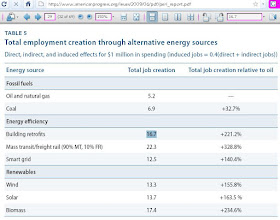Some grandparental babysitting allowed us a date night last night. We saw
Julie & Julia, which has been lingering unloved at Madison's movie house for a week and a half. This is not because it is an unlovable movie. But a conversation with cinema management noted that in general, the local movie audience is the junior high kids. Nearly every other demographic in Madison chooses the bar as its primary out-of-the-house entertainment. And we
know how that turns out. Sigh.
No 3300-word review this time (the film is good, but
it's not Star Trek ;-) ). But I do want to join
Dr. Blanchard and
Mr. Rosenthal in praising
Julie & Julia. Per the title, it is really two films: one great movie (
Julia) with a whole 'nother passable movie (
Julie) woven into it.
The great movie is the story of Julia Child and her husband Paul. It is blissful filmmaking, with as much
joie de vivre as
joie de cuisine. We see two rich characters, Julia and Paul, utterly self-assured and utterly in love. Their setbacks and disappointments never become fodder for emotional crises or meltdowns or marital spats... yet we feel their struggles and occasional sadness all the more poignantly in the shared resolve and unflagging commitment to each other with which Julia and Paul face them.
Much has been and should be said about Meryl Streep's incarnation of Julia Child. As much can be said about Stanley Tucci's great performance as Paul Child. Tucci takes a role that could so easily be phoned in—"Meryl's got the big role; no one's paying attention to anything else on screen"—and inhabits the man and the moment as studiously and confidently as his co-star. Paul Child served his country in the OSS in China during World War II, only to face McCarthyite questioning of his patriotism (and his sexuality) and the concomitant decline of his career. In the midst of such setbacks, Tucci shows a man who maintains his sense of self-worth and his unwavering and very open devotion to a wife whose ambitions and expansive character might have overwhelmed a lesser man. In his portrayal of Paul Child, Tucci offers a primer in manhood, not to mention fine acting.
I vote Oscar for Streep... but only on the condition of an Oscar for Tucci.
The passable movie was the story of Julie, the modern girl who finds meaning and her fifteen minutes of fame by cooking and blogging her way through Julia Child's recipes. I found this strand of the film tolerable, even better than some of the reviews I'd read suggested, until director Nora Ephron gave us the little marital spat where Julie's hubby got sick of Julie's self-absorption (not to mention having to wait so long to eat dinner) and went and slept in his office for a whole night. At that moment, their story seemed so... small.
The Julie strand can't help but pale next to the Julia strand. Julia and Paul, after successful and adventurous careers in espionage, face down sexism and McCarthyism. Julie's public service job is portrayed as an exercise in powerlessness from which she craves escape. Julia bangs out great bulky book drafts with typewriter and carbon paper and struggles with a lazy co-author, skeptical publishers, and the sheer bulk of recipes she wants to share for eight years before her book hits the public eye. Julia taps out daily thoughts, following the template of a book already written, and hits "Publish" to reach the masses effortlessly. Julia and Paul make Julie and her husband (name already forgotten), Julie's blogging (a "
gimmick," says NYT's A.O. Scott), and her emotional journey seem trivial.
(Blogging as trivial exercise in narcissism—should I be nervous? ;-) )
Some reviewers have faulted Ephron for trying to shoehorn these two uneven stories into one film... but maybe that was Ephron's intention. Perhaps she wanted that glaring imbalance to shine through. Perhaps we can read
Julie & Julia from a "Greatest Generation" perspective. Maybe our grandparents lived bigger lives. They could be sexy without stripping off their shirts (compare the scene where Paul sweeps Julia away for a postprandial coupling with Julie and hubby trundling through the apartment for sex: no skin in the former, but Julie is obligatorily stripped to impractically skimpy bra and panties for public viewing). We complicate our modern lives with unnecessary internal conflict and whining (Paul never whines) when we could be living and loving on a grander scale.
I could quibble with the title—why on earth does the lesser character get top billing?—but even there, I can see intention by the director to highlight and critique our modern generation's egocentrism.
Julie & Julia is a good, conversation-worthy film, deftly capturing and contrasting two generations of Americans. Don't let the unbalanced strands fool you: paralleling the lives of Julia and Paul Child with the lives of two modern somewhat-counterparts does not degrade the greater story. Consider the Julie story a soft undertone, a counterpoint to the overarching symphony that is Julia's life.
---------------------------------------
Tangential Addendum 23:02 CDT: At age 85, Judith Jones, the editor at Knopf who gave Julia Child's book its big break and its title, is still editing. Three years ago, she also
got into the cattle business. She now raises a herd of 20 cattle near her summer home in Vermont. Her beef is all grass-fed, which has a flavor, she says, she hadn't experienced since her 20s, in Paris. Her stepdaughter and partner in small-scale ranching, Bronwyn Dunne, sees the importance of growing food locally:
“Supporting a local economy is beneficial to everybody,” she said. It also resonates beyond the quaint trendiness of the farmers’ market: “It may be the future of food security in the world” [Christine Muhlke, "Raising Steaks," New York Times, 2009.09.24].




